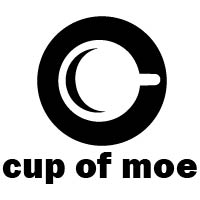We may earn money or products from the companies mentioned in this post.
1981 sci-fi film “Outland” bring a fresh take to the outer space genre with its science fiction thriller-Western hybrid. Writer-director Peter Hyams crafts a narrative that, although not devoid of tropes, presents familiar concepts in a new setting. With a gorgeous, industrial setting, a solid plot, and magnificent score, “Outland” is a true space Western gem.
Federal Marshal William O’Neil (Sean Connery) accepts an assignment on Io, a moon of Jupiter. O’Neil’s finds his new post as Con-Am 27, a titanium ore mining outpost. It’s a desolate environment with brutal living conditions. Miners must carry individual air supplies, shifts are long, and bonuses high. General Manager Mark Sheppard (Peter Boyle) brags of shattering records in productivity since his arrival. However, O’Neil’s wife Carol (Kika Markham) discovers Io unsuitable for raising their son, Paul (Nicholas Barnes). As such, Carol whisks Paul off to the Jupiter space station waiting for a shuttle back to Earth.

“Outland” bears many similarities to Ridley Scott’s “Alien,” released two years prior. With the eerie, industrialist setting, focus on an ill-fated group of miners, and consipratorial elements, the sci-fi flicks feature several parallels. Furthermore, Jerry Goldsmith scored both movies. While “Alien” sports the tagline, “In space, no one can hear you scream,” 1981 “Outland” riffs of that with “Even in space, the ultimate enemy is man.” It’s self-aware in its likeness to “Alien.”
Nevertheless, “Outland” differs. Whereas “Alien” assumes the form of a slasher in space, “Outland” blossoms into a space Western. More specifically, Hyams seemingly blasts 1952’s “High Noon” into space replete with its cast of characters and themes.
Yet while the science fiction aspects of “Outland” remain ripe with a sophisticated, high tech gloss, the Western facets falter. Though successful in titles such as “High Noon,” in “Outland” they feel more like tropes. The class motifs, while admirable, are a bit heavy-handed and lack nuance.
Despite minor shortcomings, “Outland” ultimately prevails. Through fusing two seemingly disparate genres and spawning a space Western, as well as avoiding monsters, Peter Hyams’ 1981 sci-fi film shines. The notion that humans, not aliens, are the true villains, is all the more frightening than the mindlessly murdering Xenomorph from “Alien.” But “Outland,” complete with its Jerry Goldsmith score and mining colony setting, feels as though it could feasibly exist within the same universe as the 1979 “Alien.” While not as effective as its predecessor, “Outland” is a unique science fiction adventure which brings the gunslinging to outer space.
This post may contain affiliate links. We are a participant in affiliate programs such as the Amazon Services LLC Associates Program, an affiliate advertising program designed to provide a means for us to earn fees by linking to Amazon.com and affiliated sites. However, all products are thoroughly tested and reviews are honest and unbiased.
